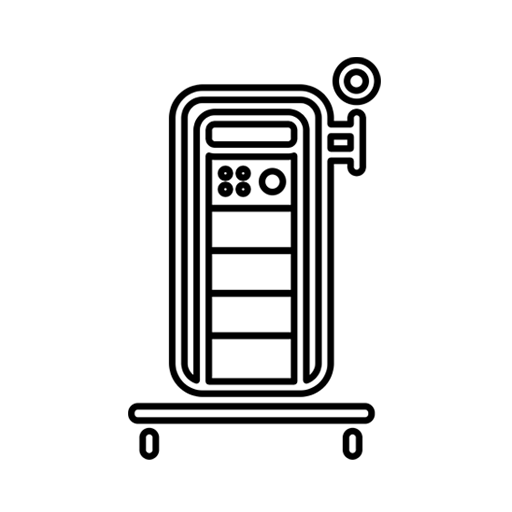
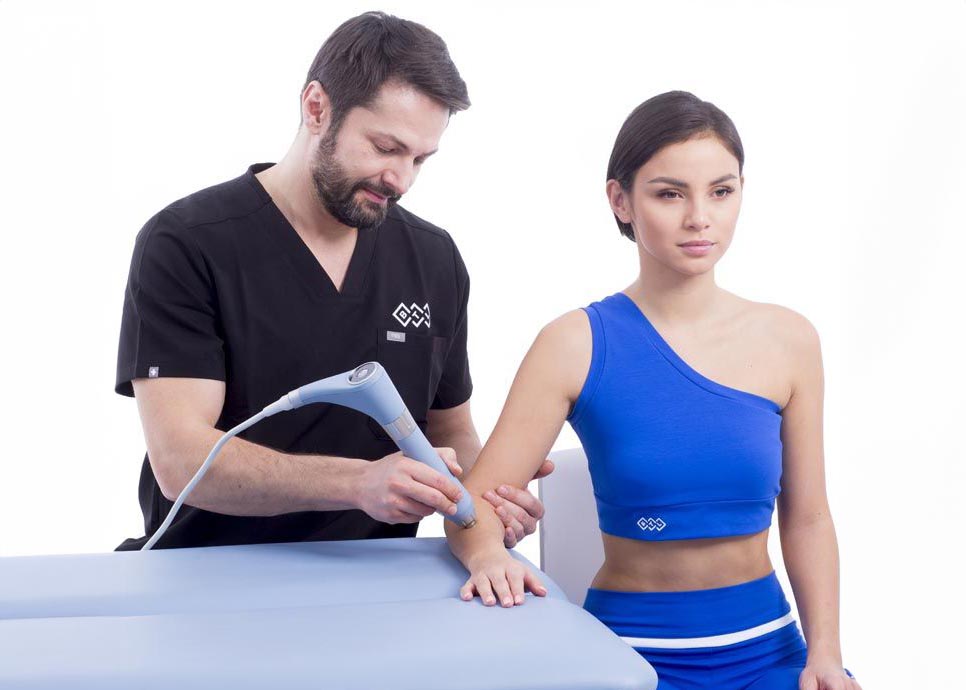
What is Shockwave Therapy?
Shockwave Therapy is an established and exciting therapy which provides pain relief and healing by stimulating the bodies natural healing process. Shockwave Therapy is a wonderful treatment option for a wide variety of muscular and soft tissue problems in your body, and we are excited to announce that the Penticton Physiotherapy & IMS Clinic will offering Shockwave Therapy to patients in the Penticton area from the middle of January 2024!
Why use Shockwave Therapy?
It’s a very common that we hear in our clinic that an individual has an ache that just doesn’t want to go away, or that they have a sports injury which they’re struggling to recover from. Often, you wish there was a way to help ‘jump-start’ the healing process; this is exactly what Shockwave Therapy does.
A shockwave is a low energy acoustic wave, which is applied directly to the patient’s skin via the shockwave machine. The shockwave travels to the injured muscle, tendon or ligament, and the force created by the shockwaves penetrates the injured soft tissues and stimulates the bodies healing process to occur.
Healing occurs by simulating the bodies natural healing response in the following ways:
- By increasing blood circulation to the affected area (also known as hyperaemia)
- Stimulating growth of cells that generate new connective tissues and bone
- By breaking down calcium deposits in muscle tissues (like in shoulder calcification)
- Disperses ‘substance P’, which is a chemical found in injured tissues which causes pain and swelling
- Increases collagen production, essential for healing of damaged muscle tendons and ligaments
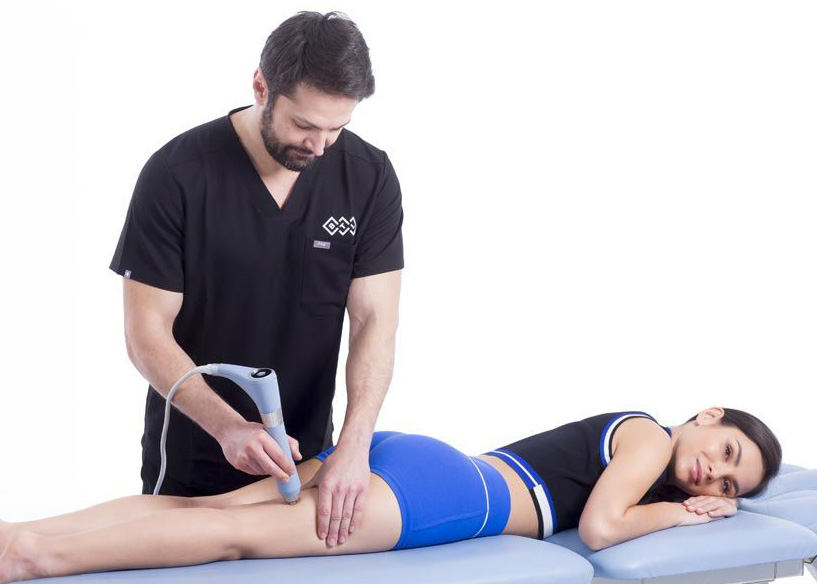
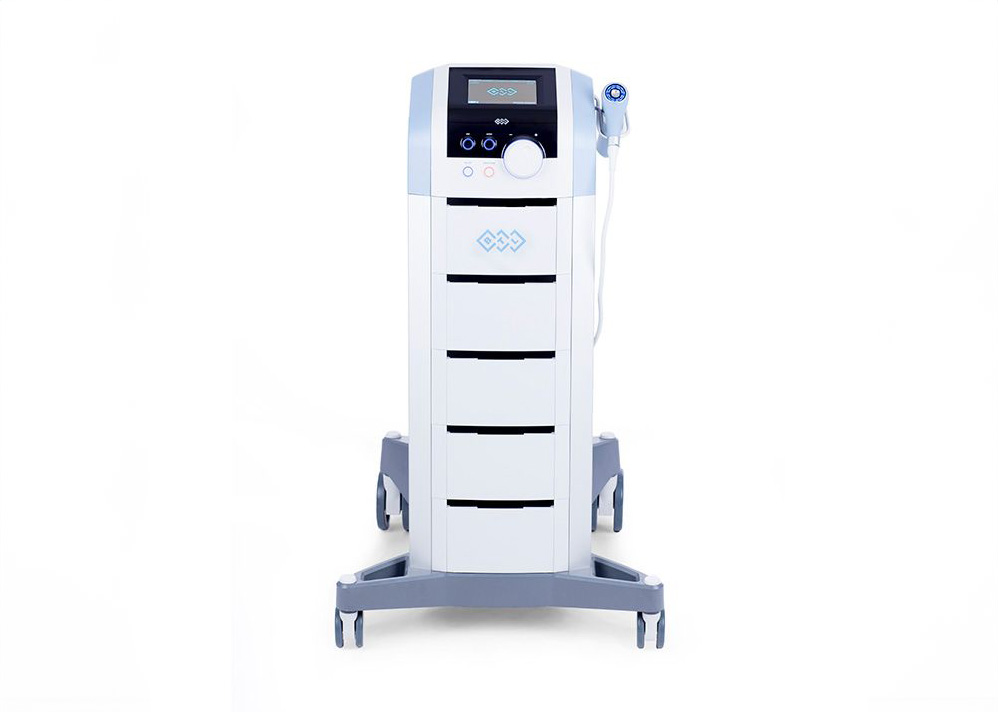
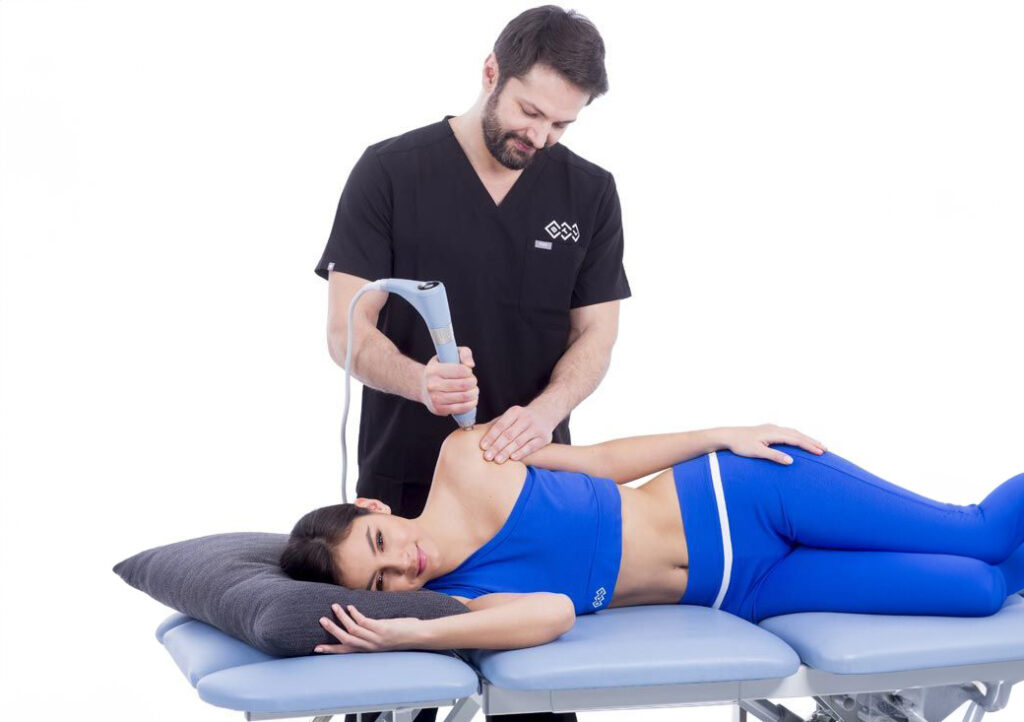
What problems can Shockwave Therapy help with?
Because shockwave therapy helps repair damaged muscles, tendons, ligaments and bones, there are a wide variety of conditions it can help to treat. Shockwave therapy is particularly helpful for tendon issues, which naturally don’t have a good blood supply and can heal slowly. The following is a list of conditions commonly treated by Shockwave Therapy:
- Achilles tendinopathy
- Plantar fasciitis
- Shoulder tendinopathy
- Hamstring, gluteal and calf muscles tendinopathy or muscle strain
- Calcific tendonitis (often seen in rotator cuff tendons around the shoulder)
- Patellar tendinosis (‘jumper’s knee’).
- Elbow pain (tennis/ golfer elbow)
- Greater trochanteric pain syndrome/ hip bursitis or tendinopathy
- Medial tibial stress syndrome/ shin splints
- Knee osteoarthritis
- Release of tight muscles and trigger points
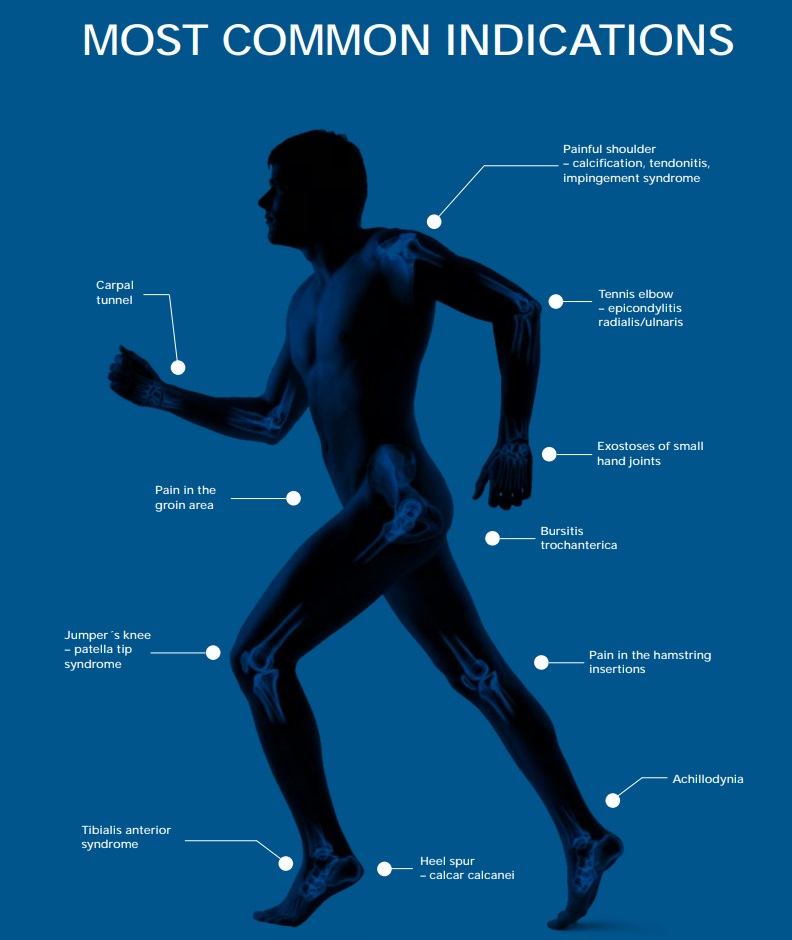
What to expect during your treatment
During your appointment, your physiotherapist will assess you to help diagnose the underlying condition, and let you know if Shockwave Therapy is a suitable treatment for you. The application of the Shockwave Therapy takes about 5 minutes, and patients normally have to undergo 3-6 sessions (please note, it is possible further treatment may be needed, depending on your condition and your bodies healing response to treatment).
If needed, we may ask you to change into a pair of shorts or a gown, depending on the area of the body we are treating. It is normal for Shockwave Therapy to feel a little bit uncomfortable (but not really painful) while you are receiving it, but your physiotherapist will adjust the intensity of the treatment as needed to make you as comfortable as possible.
Sometimes, you may find the treated area is a little swollen, or your skin is a little red/ a small bruise may have formed over the area you had treated; this is because we have stimulated the bodies natural healing process, and a small inflammatory response has been evoked; it is considered normal and nothing to worry about, and will resolve quickly.
Alongside receiving Shockwave Therapy, your physiotherapist will also complete other treatments, such as hands-on manual therapy, IMS/ Dry Needling, exercise therapy and other strategies to help resolve your injury.
Please note, Shockwave Therapy is not suitable if you are pregnant, have a malignant tumour, have a ruptured muscle tendon, are less then 18 years old, have received a corticosteroid injection in the last 6 weeks, have a pacemaker inserted, or have a blood clotting disorder/ use blood thinners.
Benefits of Shockwave Therapy
Shockwave Therapy is advantageous because it is non-invasive, and stimulates the bodies pre-existing healing system to help repair hard to treat and long-standing muscle and bone issues. It has been researched extensively and there is a wealth of evidence-based information which has shown it has a very high success rate for stubborn and chronic muscle/ tendon and bone injuries, with minimal side effects. Furthermore, it is a safe and efficient way to solve problems that otherwise may need surgery or steroid injections.
We will be receiving our Shockwave Therapy machine in early to mid January 2024, so please be sure to check with our front desk team while booking your appointment to ensure we can provide Shockwave Therapy to you!
If you would like to book an appointment with one of our physiotherapists, please click this link to be taken to our online booking page, or call us directly at 250-493-1152 to speak with our patient care coordinators!
FAQ's
There is no age limit to this treatment! It is a very safe treatment for children, teens and also for seniors. The only reason we would not perform the treatment is if the patient is too young to understand what is happening, or if they suffer from any cognitive impairment (i.e. they suffer from dementia etc.)
It is a common misconception that IMS is terribly painful or difficult to tolerate. IMS can be a treatment that some people feel some mild discomfort during, and possibly afterwards. You often do not feel the needle go in, but quite often feel the ‘twitch’ of the muscle, which can feel a little strange or uncomfortable. Some people may be a little ‘needle sore’ for roughly a day or so afterwards. This is 100% normal and nothing bad has happened! Quite often, our patient’s* original pain has lessened or gone away* immediately, and is replaced with a mild discomfort from the needle. They always report rather having this minor tenderness than the pain they had before they came in.
In a word, no. They are better described as distant cousins. While the two techniques use the same needle, the differences are vast. IMS is a western treatment that involves looking at dysfunction movement and pain patterns, and relaxes muscles by provoking a twitch reflex in the muscle. Acupuncture is an Eastern technique which works on pre-determined acupuncture points throughout the body and activates your body’s yin and yang energy systems. The effect the needle has during both treatments is quite different.
If your plan covers physiotherapy, then it covers IMS. IMS is one tool that our physiotherapists have at their disposal to help your pain, but it just one treatment your physio can offer. You do not need to inform your provider you are receiving IMS, only that you had a physiotherapy appointment.
You do not need a doctor’s referral for IMS! The only time you need a doctors referral for physiotherapy in BC is if you have a WorkSafe BC or ICBC Claim. * However, your insurance plan may require that you have a doctor’s referral for any coverage, so it is always good to check with them ahead of time.
Easily! Please call +12504931152 to call our clinic and speak with one of our physiotherapists, or if you would like to make an appointment. You can also send us a message with the form below, or book online by selecting the “book online” button below, or at the top of the page.
